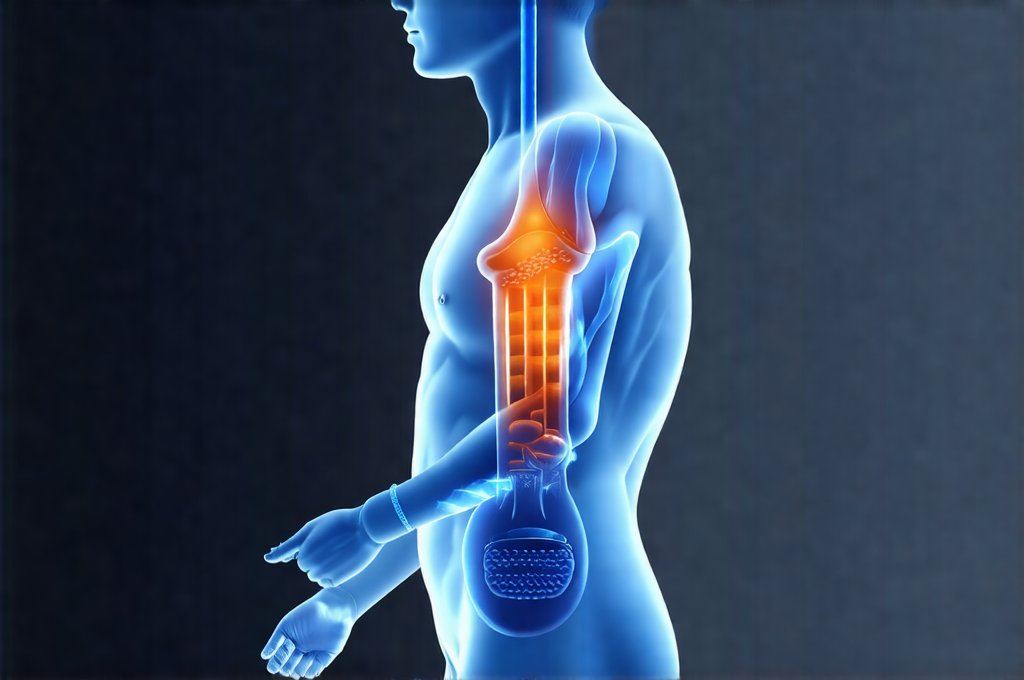Gas retention – that uncomfortable bloating, feeling of fullness, and sometimes even pain – is a surprisingly common complaint. Many factors can contribute to it, ranging from dietary choices to underlying digestive conditions. However, one often-overlooked culprit is our increasingly sedentary lifestyle. In today’s world, where many jobs involve prolonged sitting and leisure time frequently revolves around screens rather than physical activity, the impact on our digestive health can be significant. This isn’t simply about not exercising; it’s about the cumulative effects of reduced movement throughout the entire day.
The human body is designed for motion. Our digestive system relies on a complex interplay between muscles, gravity, and peristalsis (the wave-like muscle contractions that move food along the digestive tract) to efficiently process food and eliminate waste. When we’re sedentary, this natural process gets disrupted. Reduced physical activity leads to slower gut motility – meaning food takes longer to travel through the system – creating an environment where gas can accumulate. It’s a subtle but powerful connection many people don’t realize exists. This article will explore how a sedentary lifestyle contributes to gas retention, focusing on the mechanisms involved and potential strategies to mitigate these effects. You might also find it helpful to learn how to read restaurant menus if you are dining out while managing gas retention.
The Impact of Reduced Movement on Digestion
A key aspect of understanding gas retention in relation to a sedentary lifestyle is recognizing how movement impacts our digestive system. Simply put, motion aids digestion. When we’re physically active, even moderate activity like walking, stimulates the muscles in our abdomen and intestines, encouraging peristalsis. This keeps things moving smoothly along the digestive tract, reducing the time for gas-producing bacteria to ferment undigested food. Conversely, prolonged sitting compresses the abdominal area, hindering this natural movement. The pressure can actually slow down digestion and impede the passage of gas.
This isn’t just about exercise during dedicated workout sessions; it’s about incidental movement throughout the day. Things like walking to work, taking the stairs instead of the elevator, or even standing up regularly while working contribute significantly to overall gut health. A lack of these small movements adds up over time, creating a sluggish digestive system more prone to gas buildup. Consider the difference between someone who walks several times a day and someone who sits at a desk for eight hours straight – the impact on their digestive processes is likely substantial. Planning ahead with a weekly menu can also help you stay on track.
Furthermore, sedentary behavior can affect blood flow to the digestive organs. Physical activity promotes healthy circulation, ensuring that all parts of the digestive system receive adequate oxygen and nutrients needed to function optimally. Reduced movement leads to decreased blood flow, potentially impairing digestion and contributing to gas formation. Think of it like a traffic jam – if things aren’t flowing freely, everything slows down and problems accumulate.
How Sedentary Behavior Alters Gut Microbiota
The gut microbiota—the trillions of bacteria, fungi, viruses, and other microorganisms that live in our digestive tract—plays an incredibly important role in overall health, including digestion. A sedentary lifestyle can negatively impact the composition and function of this delicate ecosystem. Studies have shown a correlation between reduced physical activity and decreased microbial diversity. This means there’s less variety in the types of bacteria present in the gut.
- Microbial diversity is generally associated with better digestive health.
- A diverse microbiome helps to regulate inflammation, support immune function, and efficiently process food.
- A less diverse microbiome can lead to an overgrowth of certain gas-producing bacteria, exacerbating bloating and discomfort.
The link between inactivity and microbial imbalance isn’t fully understood, but it’s thought that reduced movement affects the environment within the gut, favoring the growth of specific types of bacteria while suppressing others. Diet also plays a role here; however, even with a healthy diet, prolonged sedentary behavior can still disrupt the microbiome. This disruption can lead to increased fermentation in the colon, resulting in more gas production. Essentially, an inactive lifestyle creates an environment where unwanted bacterial populations thrive and contribute to digestive issues. You might benefit from learning how to create a meal plan to support your gut health.
The Connection Between Posture & Digestion
Posture is often overlooked when discussing digestive health, but it’s surprisingly important. When we sit for extended periods, especially with poor posture (slouching or hunching over), we compress the abdominal organs, restricting their ability to function optimally. This compression can directly impede peristalsis and slow down the movement of food through the digestive tract.
A more upright posture, on the other hand, allows for greater space within the abdomen, promoting better digestion and reducing pressure on the intestines. Good posture isn’t just about aesthetics; it’s about supporting healthy physiological function. Consider this: imagine trying to squeeze a balloon – it resists compression. Similarly, compressing the digestive organs hinders their natural movements and processes.
Beyond simply maintaining good posture while sitting, incorporating regular changes in position is also beneficial. Standing desks or taking frequent breaks to stand up and stretch can help alleviate pressure on the abdomen and encourage better digestion. Even small adjustments like sitting with your feet flat on the floor and your back supported can make a significant difference. Establishing a kitchen routine that supports these practices could prove helpful.
Simple Strategies for Increasing Movement & Reducing Gas Retention
Combating gas retention related to a sedentary lifestyle doesn’t require drastic changes or intense exercise routines. The key is consistency and incorporating small, manageable habits into your daily life. Here are some strategies:
- Set reminders: Use alarms or apps to remind yourself to stand up and move every 30-60 minutes while working.
- Walk during breaks: Instead of scrolling through social media during your break, take a short walk around the office or outside.
- Incorporate incidental exercise: Take the stairs instead of the elevator, park further away from your destination, or walk to nearby errands.
- Improve posture: Focus on maintaining good posture while sitting and standing. Consider using ergonomic furniture that supports proper alignment.
- Gentle stretching: Incorporate gentle stretches into your daily routine to relieve tension in the abdominal muscles and promote blood flow.
- Hydrate adequately: Drinking enough water helps keep things moving through your digestive system, reducing constipation and gas buildup.
These small changes can collectively have a significant impact on digestive health and reduce gas retention over time. Remember that it’s not about striving for perfection; it’s about making consistent efforts to incorporate more movement into your daily routine. It’s also important to listen to your body and consult with a healthcare professional if you experience persistent or severe digestive issues. Recognizing the difference between GERD and panic attacks can help you address symptoms effectively.
It’s crucial to remember that gas retention is often multifactorial, meaning it can be influenced by a variety of factors beyond just lifestyle choices. Dietary habits, stress levels, and underlying medical conditions all play a role. However, recognizing the significant impact of a sedentary lifestyle is an important step towards improving digestive health and reducing discomfort. By prioritizing movement and incorporating simple strategies into our daily routines, we can support a healthier gut and experience greater overall well-being. Consider how to prepare for holidays if you are concerned about dietary triggers during celebrations. If night reflux is also an issue, you might consider using a wedge pillow.


















